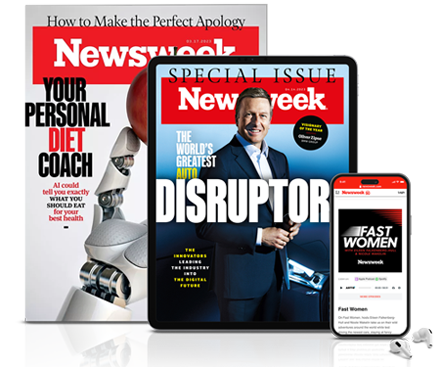Great leaders want to support the career advancement of high-potential employees.
Yet, many are unsure how best to champion and develop top talent—especially those from marginalized groups.
While mentorship is a well-known approach to supporting career growth, sponsorship is an underutilized but highly impactful strategy leaders can use to advance high-potential employees.

Sponsorship has a significant impact on career advancement. Those with sponsors are promoted more quickly, earn more and are more satisfied with their career advancement than those without.
Here's the difference between mentorship and sponsorship, plus strategies to be a successful sponsor.
Mentorship vs. Sponsorship
While both mentorship and sponsorship have a role to play in career advancement, they are significantly different strategies, with different approaches and intended outcomes.
Put simply, mentorship is primarily about guiding and advising, while sponsorship involves taking direct action to advocate to help a sponsee advance.
Mentorship—long a staple of career development programs—focuses on providing advice and guidance. Mentoring usually happens in private, with mentors often serving as sounding boards to their mentees.
Mentors typically:
- Help mentees achieve clarity on their career goals
- Talk through challenging workplace issues or professional relationships
- Provide advice on complex career-related questions
Sponsors, on the other hand, take direct action to support, advance and advocate on behalf of their sponsees. Sponsors open their networks to their sponsees, intentionally making beneficial introductions.
Sponsors typically do the following for their sponsees:
- Seek out and create high-visibility opportunities
- Leverage their relationships and influence to advocate publicly for opportunities
- Champion their skills and accomplishments, speaking their names in rooms they're not in
An additional important difference is that mentors can be at any level of the organization if they have advice and experience relevant to their mentee. Sponsors, in contrast, are senior leaders who can leverage their position and influence to advocate for their sponsees.
While mentoring can be an important part of career advancement, mentoring alone is rarely sufficient to advance employees—especially those from marginalized backgrounds who are often disadvantaged in organizational cultures where bias persists.
Why Underrecognized Employee Groups Need More Intentional Sponsorship
While sponsorship is critical to career and leadership advancement, far too few employees—particularly those from marginalized backgrounds—have a sponsor.
Data shows that across many marginalized groups, a sponsorship gap exists. In particular, women and people of color tend to be over-mentored and under-sponsored.
Here are some statistics to illustrate the gap, according to Harvard Business Review and McKinsey & Company:
- 20 percent of white employees have a sponsor while only 5 percent of Black employees do
- Only 32 percent of white women and 26 percent of women of color say they have a sponsor
- Only 21 percent of trans people (in comparison to 32 percent of cisgender people) have a sponsor.
This is, in part, because leaders tend to pick sponsees who are of the same race and gender. In fact, research from Harvard Business Review shows that nearly 75 percent of sponsors have sponsees who are of the same race or gender.
With professionals from marginalized groups experiencing such significant gaps in rates of sponsorship, sponsors should ensure that they are disrupting the sponsorship gap as they are identifying potential candidates.
Strategies for Being a Stellar Sponsor
The most important action you can take to be a good sponsor is simply to move from mentoring to sponsoring.
Here are some strategies you can start implementing today:
1. Don't Wait for a Formal Sponsorship Program
Be on the lookout for employees who demonstrate initiative, motivation and self-direction. And be sure that you're not only identifying high-potential employees who look like you or have backgrounds similar to your own. You don't have to share your sponsee's identities to be an effective sponsor.
2. Sponsor Multiple Employees
If you have the time and ability, sponsor as many employees as your bandwidth allows. Just be sure to get to know your sponsees individually. Understand their strengths, growth areas and goals, and keep in mind that there are many paths to success, including paths that may be different from yours.
3. Understand Your Sponsee's Goals
Once you understand your sponsee's goals, be intentional about advocating for opportunities that align with those goals. Recommend your sponsee for stretch projects, high-visibility assignments and opportunities to showcase and develop their skills.
4. Be Creative in Your Support
Be creative in how you support your sponsee's advancement. For instance, if a role they want to be promoted into isn't currently open, advocate for their promotion into a similar role. If an assignment that would help make your sponsee's work more visible doesn't exist, leverage your network to create one.
5. Leverage Your Network
Introduce your sponsee to others in your professional network with whom it would benefit them to have a relationship. Additionally, consider bringing them to your high-level meetings and networking events to help increase their visibility.
6. Advocate for Your Sponsee
Leverage your capital to advocate on behalf of your sponsee. Highlight your sponsee's skills and achievements in rooms where they are not present. Amplify your sponsee's ideas and contributions, sharing and showcasing their accomplishments and skills to broader audiences.
7. Take Your Role Seriously
Take your sponsorship as seriously as you do your other commitments. Show up when you say you will and take the actions you say you will. Be clear with your sponsee from the outset about your bandwidth and what you can and can't offer as a sponsor.
Align with your sponsee on how and how often you'll communicate as well as what stays between you and what should be shared beyond your sponsor-sponsee relationship.
Being a good sponsor doesn't require you to be perfect, but it does require commitment and strategic effort.
In addition to building time into your schedule to engage in sponsorship activities, be intentional about using your network to advocate on behalf of your sponsees. It could make a significant difference in their career advancement.
About the Author
Brandy L. Simula, Ph.D., ACC (she/they) is an award-winning consultant, speaker and executive coach. She has spent the last decade leveraging her doctoral training in behavioral science and social psychology to help organizations and senior leaders address critical workplace culture, leadership and organizational development challenges. An ICF-certified executive and leadership coach, they write and speak frequently on leadership and organizational development, DEIB, workplace culture, well-being, and women's and LGBTQ+ career and leadership development.








